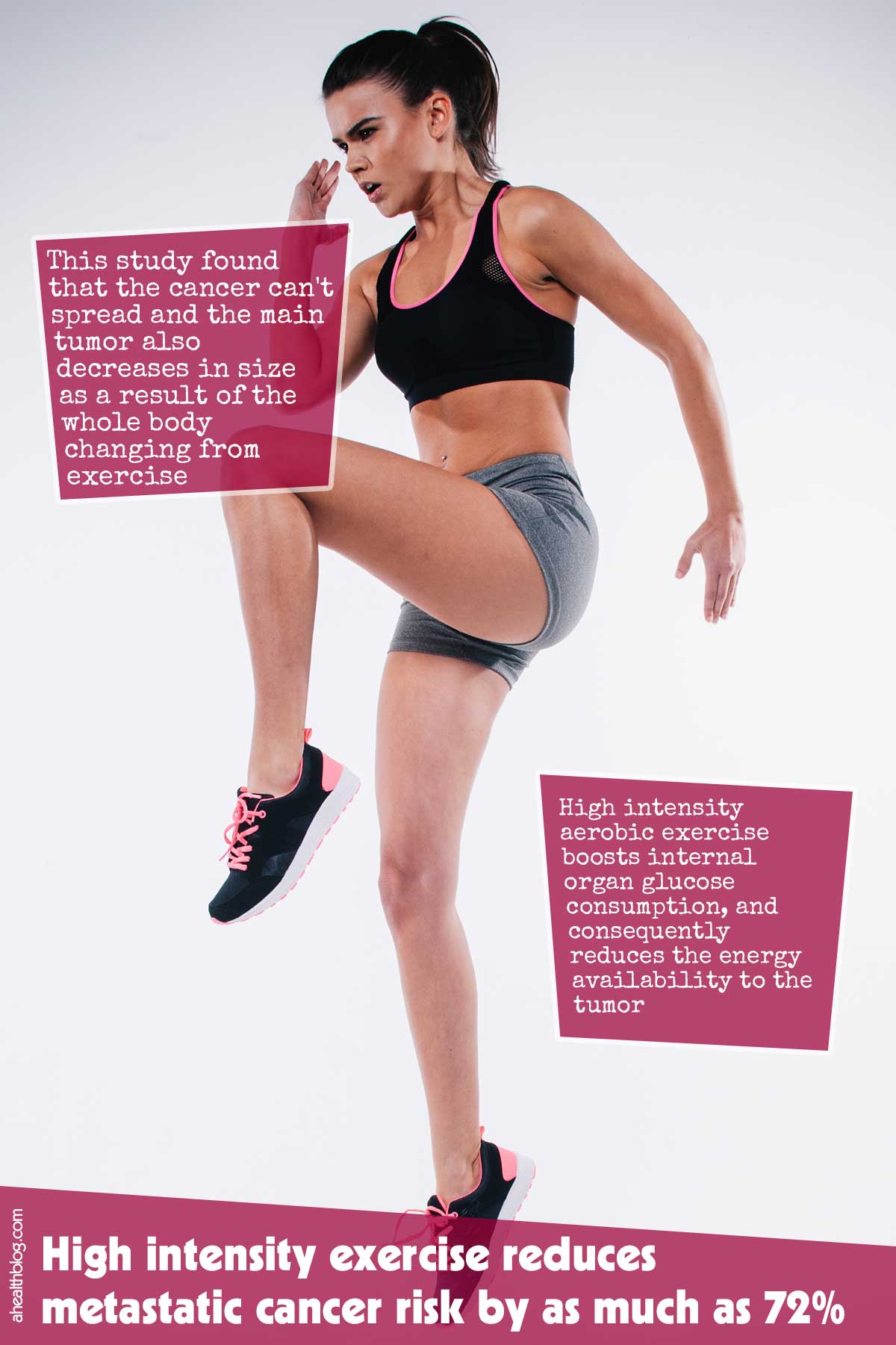A study has revealed that metastatic cancer risk can be reduced by 72% with aerobic exercise. According to the study authors, high-intensity aerobic exercise boosts internal organ glucose consumption, and consequently reduces the energy availability to the tumor.1✅ JOURNAL REFERENCE
DOI: 10.1158/0008-5472.can-22-0237
Research has shown that the risk for several kinds of cancer is reduced by as much as 35% with physical exercise. This beneficial effect is comparable to the effect that exercise has on other disorders, which include diabetes and heart disease.
The research combined data from human participants evaluated before and after they ran with that of mice that were trained under a stringent exercise routine. The human data, provided by a study that followed 3,000 people for approximately 20 years, showed that individuals who reported engaging in high-intensity aerobic activity regularly had 72% less metastatic cancer, in comparison to individuals who didn’t exercise.
The mice model revealed similar results, also allowing the researchers to establish the underlying mechanism. The internal organs of the mice were sampled before and after exercising, and also after the cancer was injected. The researchers discovered that metastatic tumor development in the liver, lungs, and lymph nodes was significantly reduced with aerobic activity.
The researchers theorized that in both model animals and humans, this favorable result is linked to the improved rate of glucose consumption from exercising.
The researchers found an increase in the amount of glucose receptors in the cells of the organs while engaging in high-intensity aerobic exercise, boosting the intake of glucose and converting the organs into potent energy consuming units similar to that of the muscles.
The researchers believe that this takes place due to the fact the organs need to compete with the muscles for sugar resources, muscles burn huge amounts of glucose while exercising. As a result, the intense competition over glucose reduces the energy availability that’s essential to metastasis for the development of cancer.
Also, this condition becomes long-term when exercising regularly, the internal organ tissues change and become much like muscle tissue.
This study found that the cancer can’t spread and the main tumor also decreases in size as a result of the whole body changing from exercise.
The results reveal that, unlike relatively moderate fat-burning exercise, it’s high-intensity aerobic exercise that helps with cancer prevention. If the optimum intensity fat burning range is 65-70% of the maximum pulse rate, burning sugar needs 80-85%, even if just for brief intervals.
By way of example: a 1-minute sprint accompanied by walking, followed by another sprint. Such intervals were previously mostly typical of the training routines of athletes, but nowadays they are also seen in other exercise regimens like lung and heart rehabilitation.
The results indicate that high-intensity elements should also be included in fitness programs. It should also be noted that physical exercise, with its physiological and metabolic effects, exhibits a higher level of cancer prevention compared to any medical intervention or medication.




